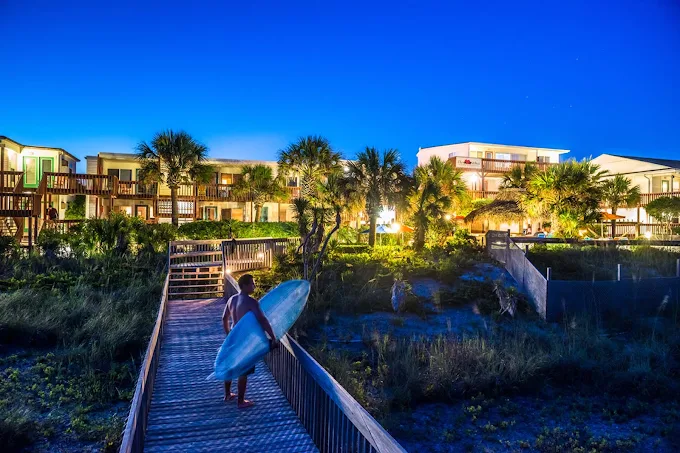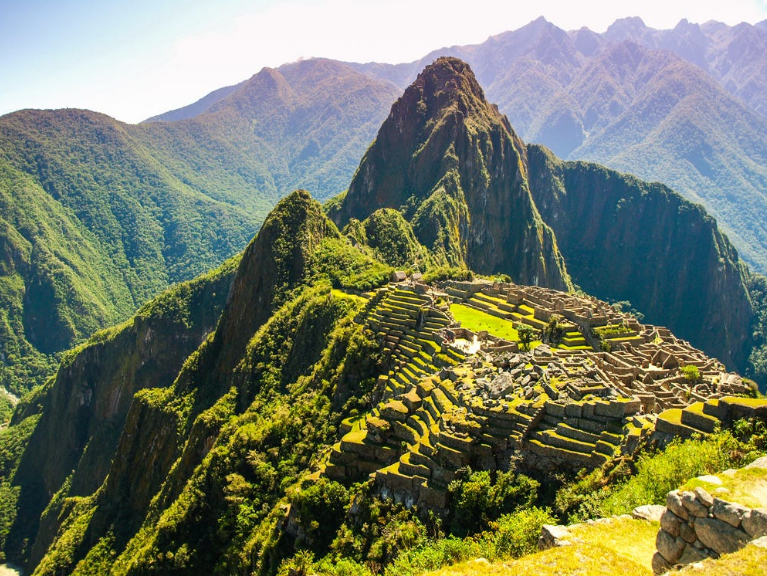Golden Triangle India Journey Through Delhi Agra Jaipur

Introduction to the Golden Triangle India
The Golden Triangle India is one of the most well-known and rewarding travel circuits in the country. It connects three of the most historically and culturally significant cities: Delhi, Agra, and Jaipur. This triangular route forms a perfect blend of heritage, architecture, cuisine, and vibrant local life. Each city on the route has its own identity, yet together they offer a deeply immersive experience of India’s layered past and dynamic present.
This 1500-word guide is designed to provide a real, simple, and human-written perspective on the Golden Triangle India route — not just for first-time visitors but also for anyone who wants to understand why these three cities matter so much to Indian tourism and history.
Delhi: The Starting Point of Golden Triangle India
Delhi, the capital of India, serves as the ideal starting point of the Golden Triangle India route. The city is divided into two distinct zones: Old Delhi and New Delhi.
Old Delhi: The Soul of the City
Old Delhi reflects the deep-rooted traditions and the chaotic charm of India. Walking through Chandni Chowk, the narrow lanes reveal age-old shops, street food vendors, and centuries-old havelis. Jama Masjid, one of the largest mosques in India, stands as a remarkable piece of Mughal architecture.
Red Fort, another iconic structure, symbolizes India’s colonial past and independence. Rickshaw rides through the lanes of Old Delhi give a raw look into everyday life here.
New Delhi: Planned Elegance and Colonial Legacy
Contrasting the old part, New Delhi boasts wide avenues, roundabouts, and architectural styles reflecting the British era. India Gate, Rashtrapati Bhavan, and the Parliament House offer a colonial view, while Humayun’s Tomb and Qutub Minar present the Mughal contribution to the city’s skyline.
Delhi is also home to museums, art galleries, markets like Connaught Place and Sarojini Nagar, and numerous cafes and restaurants that cater to every taste.
Whether you’re drawn to monuments or street food, Delhi offers a fulfilling start to the Golden Triangle India circuit.
Agra: The Iconic Middle of Golden Triangle India
From Delhi, the journey continues to Agra, a city that lives and breathes Mughal history. It takes approximately 3 to 4 hours by road or train, and many travelers use the Yamuna Expressway for a smooth ride.
Taj Mahal: The Symbol of Eternal Memory
The Taj Mahal doesn’t need much introduction. Built by Emperor Shah Jahan in memory of his wife Mumtaz Mahal, this white marble monument has become synonymous with Agra itself. Watching the Taj change hues during sunrise and sunset is a moving experience.
Beyond the global fame, the details — intricate inlays, symmetrical design, the gardens, the water channels — all come together to form a powerful image of love and craftsmanship.
Agra Fort: A Stronghold of History
Located a few kilometers from the Taj Mahal, Agra Fort is a red sandstone fortress built by Emperor Akbar. Inside, visitors can see Diwan-i-Am (Hall of Public Audience), Diwan-i-Khas (Hall of Private Audience), and Jahangir’s Palace.
The fort offers panoramic views of the Yamuna River and even distant views of the Taj Mahal.
Local Experiences in Agra
Agra is more than just its monuments. From marble inlay workshops to traditional sweet shops (like those offering petha), the city provides a rich cultural experience. Mehtab Bagh, situated across the river, gives photographers a peaceful spot to view the Taj without the usual crowd.
Agra continues the narrative of Golden Triangle India with depth and elegance, setting a rich tone for the final leg of the journey.
Jaipur: The Vibrant End to Golden Triangle India
The final corner of the Golden Triangle India route is Jaipur, the capital of Rajasthan. Known as the Pink City due to the color of its old buildings, Jaipur brings royal flair and desert spirit to the triangle.
Amber Fort: Majesty in the Hills
Amber Fort, located just outside Jaipur, is a majestic blend of Hindu and Mughal architecture. With its ornate gates, mirrored halls (Sheesh Mahal), and elephant rides up the cobbled path, it leaves a lasting impression.
Visitors often enjoy the light and sound show in the evening, which narrates the fort’s history with engaging visuals and music.
City Palace and Jantar Mantar
In the heart of Jaipur lies the City Palace, still home to the royal family. The palace complex includes museums, courtyards, and gardens that showcase Rajput and Mughal influences.
Next door is Jantar Mantar, a UNESCO World Heritage Site and one of the largest observatories in the world. Its astronomical instruments still accurately predict time and celestial events.
Hawa Mahal and the Old City
The iconic Hawa Mahal (Palace of Winds) stands as a striking piece of Rajput architecture. With its honeycomb structure and small windows, it allowed royal women to observe street festivities without being seen.
Jaipur’s markets—Bapu Bazaar, Johari Bazaar, and Tripolia—are ideal for picking up handicrafts, jewelry, textiles, and traditional Rajasthani attire.
Best Time to Travel the Golden Triangle India
Weather plays a big role in how you experience the Golden Triangle India.
- October to March: Pleasant weather makes sightseeing comfortable. This is the most popular travel season.
- April to June: These months can be extremely hot, especially in Jaipur and Agra.
- July to September: Monsoon season brings some rain, especially in Delhi and Agra, but also helps in avoiding crowds.
Planning your journey around the cooler months ensures better enjoyment and relaxed travel.
Transportation and Travel Tips
Traveling the Golden Triangle India route is quite convenient, thanks to well-connected highways and rail routes.
By Road
Most travelers use private cabs or tourist buses for a 5 to 7-day circuit. Roads are good, especially the Yamuna Expressway between Delhi and Agra.
By Train
Shatabdi Express and Gatimaan Express are popular trains between Delhi and Agra. Jaipur is also connected via trains like Ajmer Shatabdi or Jaipur Express.
By Air
Though all three cities have airports, the most efficient route is by road or rail due to shorter distances and richer roadside experiences.
Travel Tips
- Keep a copy of your ID and important documents
- Dress modestly, especially while visiting temples or mosques
- Stay hydrated, particularly in summer
- Be mindful of pickpockets in crowded areas
- Try local foods in clean, trusted outlets
Cultural Highlights Across the Golden Triangle India
Each city has a unique cultural footprint that adds flavor to your journey.
- Delhi is a blend of modern and traditional, offering Mughlai food, Indo-Islamic monuments, and vibrant markets.
- Agra keeps its Mughal roots alive in food, craft, and storytelling.
- Jaipur bursts with Rajasthani pride through its folk music, camel fairs, royal palaces, and handcrafted goods.
Witnessing local festivals like Holi, Diwali, or Teej during your visit can add even more richness to your trip.
Ideal Itinerary for Golden Triangle India
Here is a sample itinerary that balances travel and sightseeing without feeling rushed:
- Day 1: Arrival in Delhi – India Gate, Qutub Minar, Lotus Temple
- Day 2: Old Delhi – Red Fort, Jama Masjid, Chandni Chowk
- Day 3: Travel to Agra – Taj Mahal, Mehtab Bagh
- Day 4: Agra Fort, Local Market, Drive to Jaipur (via Fatehpur Sikri)
- Day 5: Jaipur – Amber Fort, City Palace
- Day 6: Hawa Mahal, Jantar Mantar, Shopping
- Day 7: Return to Delhi
This route allows you to enjoy all three cities with ample time for rest, photography, and local exploration.
Final Thoughts on Golden Triangle India
The Golden Triangle India is more than just a tourist route. It’s a deep dive into the architecture, emotions, traditions, and contrasts of India. From the political capital of Delhi to the poetic beauty of Agra and the royal energy of Jaipur, each city completes a journey that reflects India’s grandeur and grit.
Whether you are coming for the first time or revisiting, this route always has something new to show. With a well-planned itinerary and an open mind, the Golden Triangle India circuit can turn into one of your most meaningful travel experiences.








